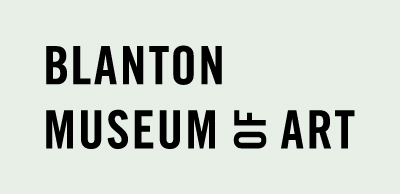Language of Prints
Tuesday, April 22, 2008 - Sunday, August 17, 2008
This season the Blanton Museum of Art presents an important exhibition of prints drawn exclusively from its renowned collection. The Language of Prints will provide an opportunity for seasoned connoisseurs to view a comprehensive section of the Blanton’s collection, as well as serve as an overview to anyone who has ever wondered about the importance of prints or how to read the nuanced craftsmanship behind these complex works on paper.
Conceived as an introduction to this distinctive medium, the exhibition includes more than 100 rare works from the museum’s collection, with examples from Albrecht Dürer, Rembrandt, Francisco Goya, Roy Lichtenstein, Henri Matisse, Carol Bove, and many others. With works from the 15th century to today, it serves as a comprehensive overview of the history of printmaking, but more importantly, it examines the relationship between the works and the society and time in which they were produced. Through insightful parings, the principles, techniques and processes of prints will be examined, offering viewers an accessible explanation of the medium.
Jonathan Bober, Curator of Prints, Drawings and European Paintings, explains, “Prints are the most frequently experienced but least understood works of art. In most exhibitions, the medium is usually presented in terms of its great masters or explained solely in terms of technique. This exhibition uses these traditional presentations as simply a point of departure. It explores the medium as a rich and largely collective system of expression–a ‘language’– all its own.”
The exhibition explores three important areas: the principles, techniques, and processes of the medium. Mezzotints, engravings, lithographs, woodcuts, etchings, and many other print making methods will be explained to viewers, with first-rate examples of each process. In addition to printmaking techniques, viewers will come to understand how throughout history, prints have functioned within their respective societies. Used as advertisements, teaching or proselytizing tools, portraits, and even currency, prints have long influenced society in both direct and subtle ways.
The exhibition, on view April 19 through August 17, also marks the occasion of the 2008 annual meeting of the Print Council of America. This meeting, organized by the Blanton, is the first Council meeting in Texas. The Council specifically selected the Blanton for its comprehensive collection, which is widely recognized as one of the largest and most distinctive collections of prints on a university campus.
Conceived as an introduction to this distinctive medium, the exhibition includes more than 100 rare works from the museum’s collection, with examples from Albrecht Dürer, Rembrandt, Francisco Goya, Roy Lichtenstein, Henri Matisse, Carol Bove, and many others. With works from the 15th century to today, it serves as a comprehensive overview of the history of printmaking, but more importantly, it examines the relationship between the works and the society and time in which they were produced. Through insightful parings, the principles, techniques and processes of prints will be examined, offering viewers an accessible explanation of the medium.
Jonathan Bober, Curator of Prints, Drawings and European Paintings, explains, “Prints are the most frequently experienced but least understood works of art. In most exhibitions, the medium is usually presented in terms of its great masters or explained solely in terms of technique. This exhibition uses these traditional presentations as simply a point of departure. It explores the medium as a rich and largely collective system of expression–a ‘language’– all its own.”
The exhibition explores three important areas: the principles, techniques, and processes of the medium. Mezzotints, engravings, lithographs, woodcuts, etchings, and many other print making methods will be explained to viewers, with first-rate examples of each process. In addition to printmaking techniques, viewers will come to understand how throughout history, prints have functioned within their respective societies. Used as advertisements, teaching or proselytizing tools, portraits, and even currency, prints have long influenced society in both direct and subtle ways.
The exhibition, on view April 19 through August 17, also marks the occasion of the 2008 annual meeting of the Print Council of America. This meeting, organized by the Blanton, is the first Council meeting in Texas. The Council specifically selected the Blanton for its comprehensive collection, which is widely recognized as one of the largest and most distinctive collections of prints on a university campus.

